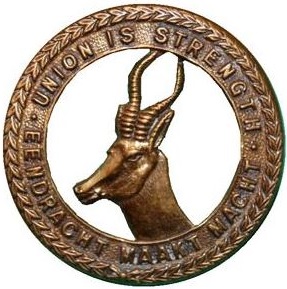
The Second Boer War, also known as the Boer War, the Anglo–Boer War, or the South African War, was a conflict which was fought between the British Empire and the two Boer Republics over the Empire's influence in Southern Africa from 1899 to 1902.

The First Boer War, was fought from 16 December 1880 until 23 March 1881 between the United Kingdom and Boers of the Transvaal. The war resulted in a Boer victory and eventual independence of the South African Republic. The war is also known as the First Anglo–Boer War, the Transvaal War or the Transvaal Rebellion.

The Royal Regiment of Canadian Artillery is the artillery personnel branch of the Canadian Army.

General Sir Walter Norris Congreve,, was a British Army officer in the Second Boer War and the First World War, and Governor of Malta from 1924 to 1927. He received the Victoria Cross, the highest award for gallantry in the face of the enemy that can be awarded to British and Commonwealth forces.

The Chief Langalibalele Rifles is a reserve infantry regiment of the South African Army.

The Nelson Mandela Artillery Regiment is a reserve artillery regiment of the South African Army and part of the South African Army Artillery Formation.

The Autshumato Anti-Aircraft Regiment is a reserve air defence artillery regiment of the South African Army.
South Africa has a number of Traditional Regiments. These are mostly South African Army Reserve Force regiments that were established either under previous colonial governments or by the Apartheid regime and which have continued to exist by accepting the authority of the government-of-the-day - be it colonial, union, Apartheid, or fully democratic.
The Cape Colonial Forces (CCF) were the official defence organisation of the Cape Colony in South Africa. Established in 1855, they were taken over by the Union of South Africa in 1910, and disbanded when the Union Defence Forces were formed in 1912.

The South African Overseas Expeditionary Force (SAOEF) was a volunteer military organisation in World War I.
The military history of South Africa chronicles a vast time period and complex events from the dawn of history until the present time. It covers civil wars and wars of aggression and of self-defence both within South Africa and against it. It includes the history of battles fought in the territories of modern South Africa in neighbouring territories, in both world wars and in modern international conflicts.

The Boer Commandos or "Kommandos" were volunteer military units of guerilla militia organized by the Boer people of South Africa. From this came the term "commando" into the English language during the Second Boer War of 1899-1902 as per Costica Andrew.

The Ordnance RML 7-pounder Mk IV "Steel Gun" was a British rifled muzzle-loading mountain gun. 7-pounder referred to the approximate weight of the shell it fired.

The South African National War Museum in Johannesburg was officially opened by Prime Minister Jan Smuts on 29 August 1947 to preserve the history of South Africa's involvement in the Second World War. In 1975, the museum was renamed the South African National Museum of Military History and its function changed to include all conflicts that South Africa has been involved in. In 1999 it was amalgamated with the Pretoria-based Transvaal Museum and National Cultural History Museum to form the NFI. In April 2010 Ditsong was officially renamed Ditsong Museums of South Africa and the SANMMH was renamed the Ditsong National Museum of Military History.
The South African 1st Infantry Brigade was an infantry brigade of the army of the Union of South Africa during World Wars I and II. During World War I, the Brigade served as a British formation in Egypt and on the Western Front, most famously the Battle of Delville Wood. It was reactivated at the start of the Second World War as a South African formation and served in East Africa and the Western Desert; the Brigade disbanded on 1 January 1943.

The South African Wars, including the Confederation Wars, were a series of wars that occurred in the southern portion of the African continent between 1879 and 1915. Ethnic, political, and social tensions between European colonial powers and indigenous Africans led to increasing hostilities, culminating in a series of wars and revolts, which had lasting repercussions on the entire region. A key factor behind the growth of these tensions was the pursuit of commerce and resources, both by countries and individuals, especially following the discoveries of diamonds in the region in 1867 and gold in 1862.

The military history of Australia during the Boer War is complex, and includes a period of history in which the six formerly autonomous British Australian colonies federated to become the Commonwealth of Australia. At the outbreak of the Second Boer War, each of these separate colonies maintained their own, independent military forces, but by the cessation of hostilities, these six armies had come under a centralised command to form the Australian Army.

26 Field Artillery Regiment was an artillery regiment of the South African Artillery.

The South Australian Mounted Rifles (SAMR) was a mounted infantry unit of the Colony of South Australia that served in the Second Boer War. The first contingent of South Australian Mounted Rifles was raised in 1899, followed by a second contingent in 1900.
















